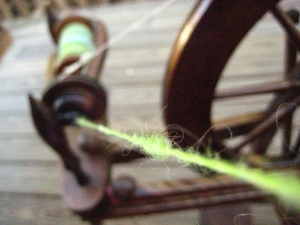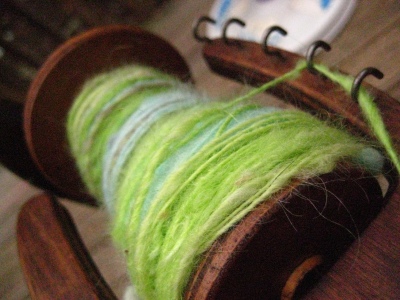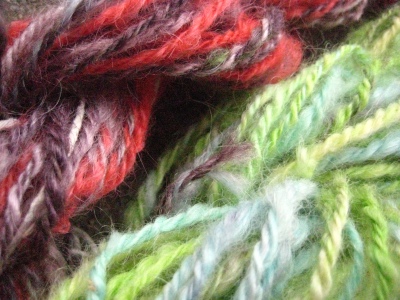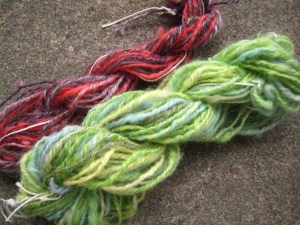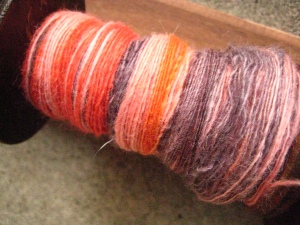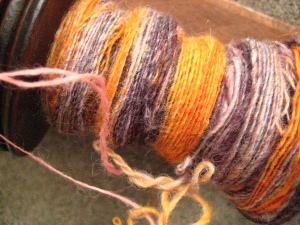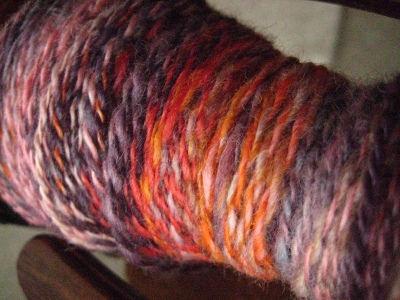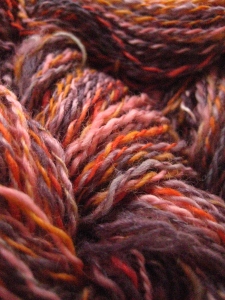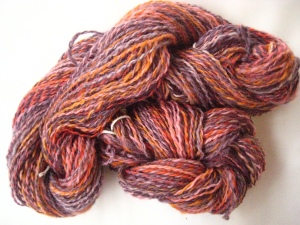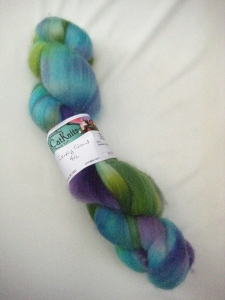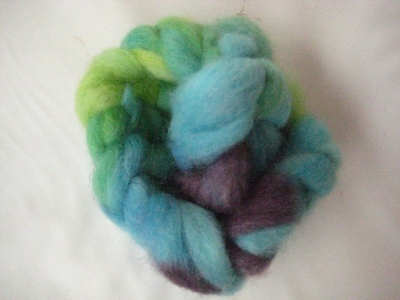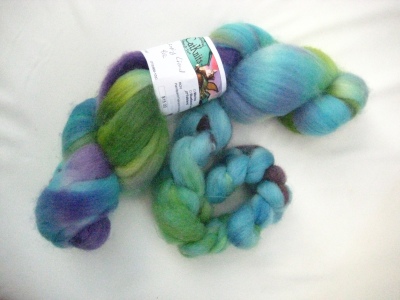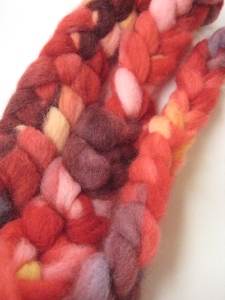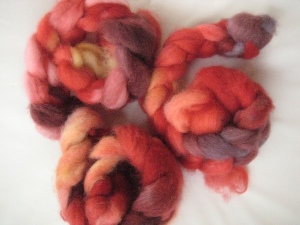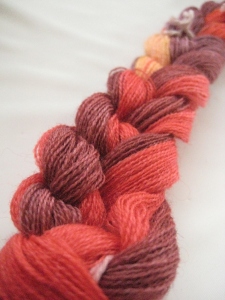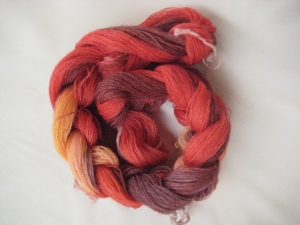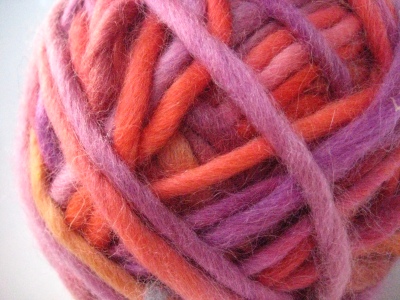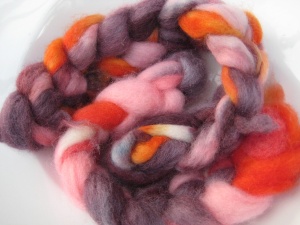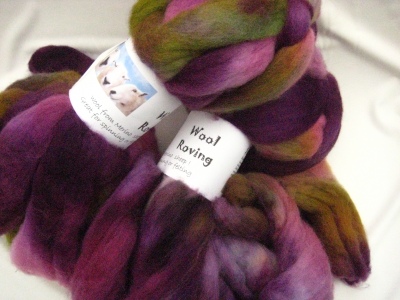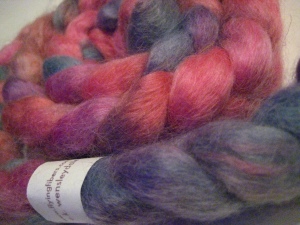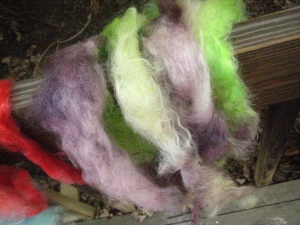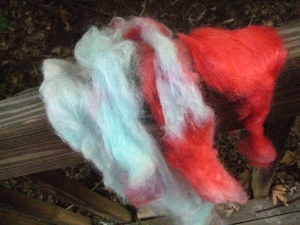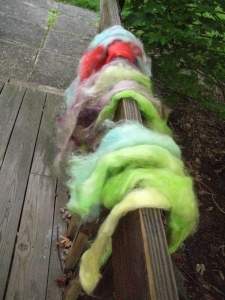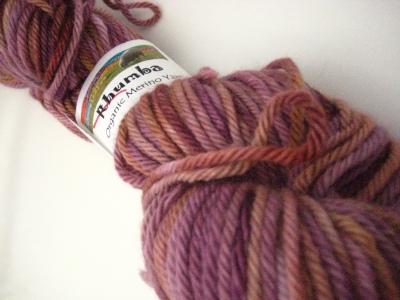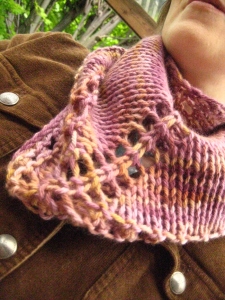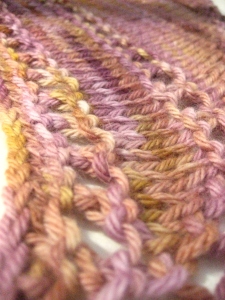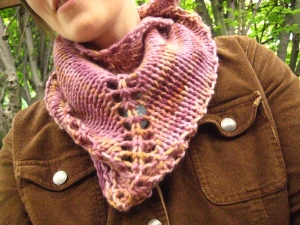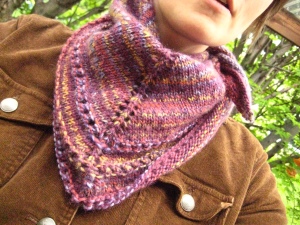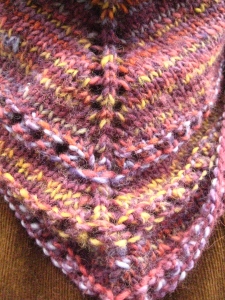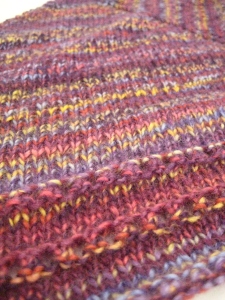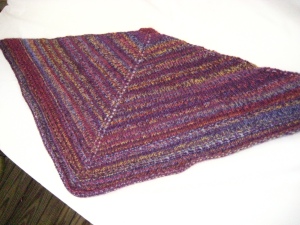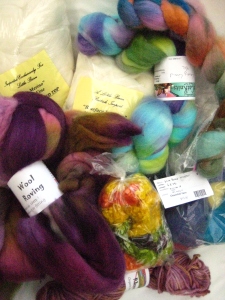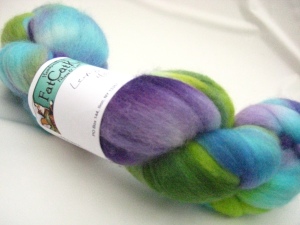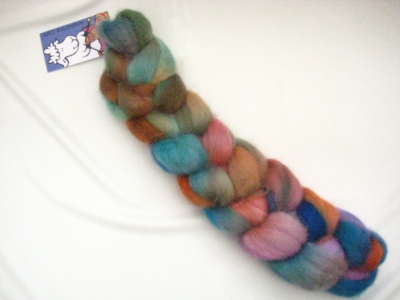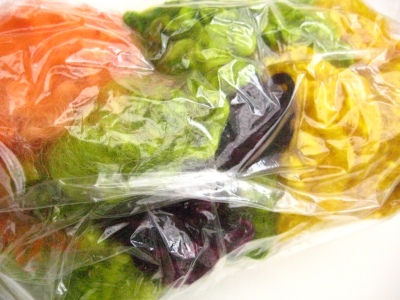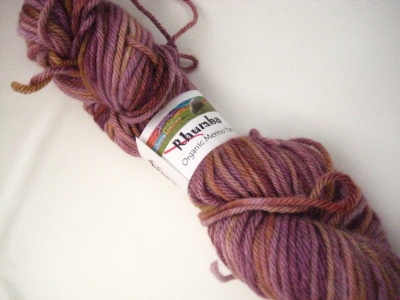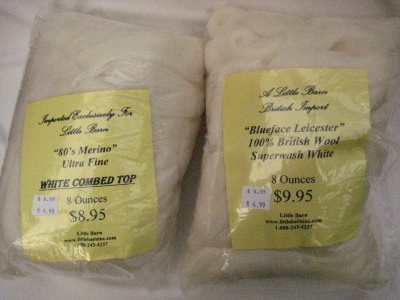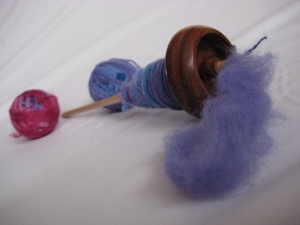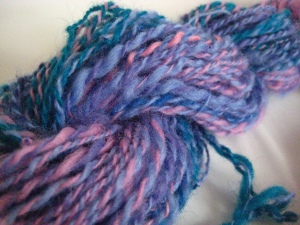Part of me was saying, “Just throw it all out!” My first foray into Kool-Aid dyeing had turned out just ugly, ugly, ugly. I was relieved that at least I’d thought to buy the cheapest roving I could find to start out on, but that was probably the only highlight of the whole experiment. Chucking it all out and forgetting it ever happened might be the best way forward!
But, looking at it, I realised that, although the purple and green were hideous together and the blue and red clashed jarringly, there was a possibility of salvaging this disaster. If I split them up and spun the blue with the green and the purple with the red, it might work.
I got out the wheel and got right to work. The first thing I noticed was that this was some tough roving. I’d bought it from a vendor at the Waynesburg Sheep and Wool Festival and, even as I was looking at it, the lady running the stall was trying to get me to buy another kind instead. “That one’s just not that nice,” she said, pointing to the wool and alpaca mix I was fingering. “This one over here is much better for spinning.” But I explained that I was looking for something really cheap try dyeing with and, besides, I was used to spinning with uncooperative wool.
I’d never spun with commercially prepared roving in the UK, let alone top. I learned to card when I first learned to spin, but quickly decided I just couldn’t be fussed to do it, and started spinning directly from the raw fleece instead. It wasn’t easy at first — raw fleece is full of little knotted bits and vegetable matter (and very occasionally a dead bug or a lump of poo) — but my fingers soon became adept at sorting the wool as I drafted. Spinning in the grease was highly economical as well, because the bottom has fallen out of the UK wool market — it often costs the farmers more to transport their shorn fleeces to market than they actual make from the sale — and I could get a good (whole) fleece for about £5, and very often for free just for asking. Before long, I was able to spin an even, fine single direct from the raw fleece.
But there are no such bargains to be had in the US — fleeces here cost upwards from $40 — and, with my daughter showing signs of a possible allergy to lanolin, I’ve switched to spinning from roving and top. At first, I didn’t like it — where was the challenge? It’s all so smooth, it’s almost pre-drafted! But I’ve quickly gotten used to it — spoiled, in fact. It’s so easy and… oh yes, so clean! It doesn’t fight my fingers, it gives in so seductively, and raw fleece never came in the glorious colourways I’ve been collecting lately.
So it came as a bit of shock to be handling such an unruly wool again. This roving didn’t want to submit — it chucked slubs and knots and vegetable matter at me. And it argued, it stuck… it annoyed me. I suddenly realised just how spoiled I’ve become!
But I carried on, let the slubs pass through for character while my fingers tried to remember what to do, and somewhat proudly finished spinning my first attempt at Kool-Aid dyeing. It isn’t a nice yarn — it’s too rough and scratchy — and there’s not much of it, but the I think the result has clawed back some measure of success from disaster.
